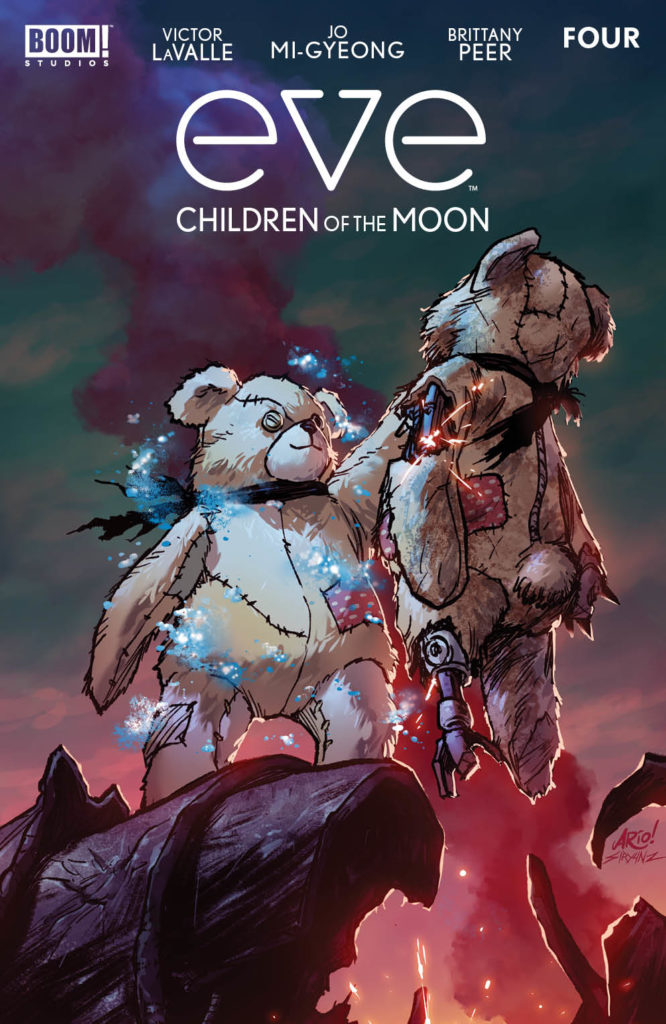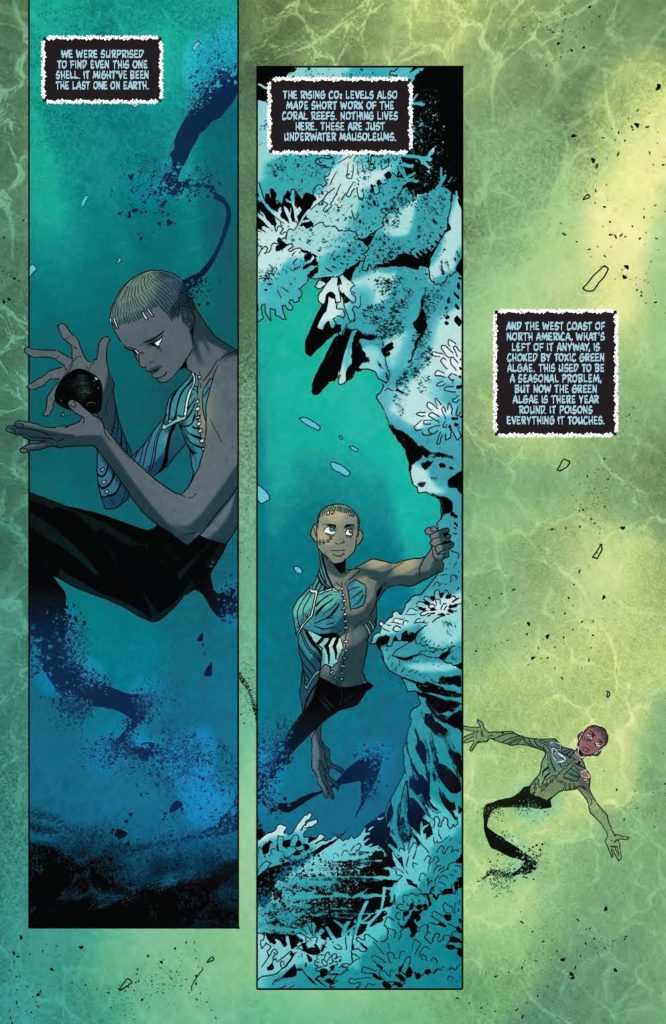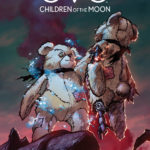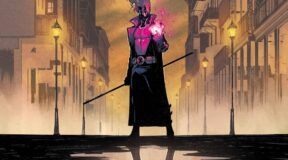
Eve: Children of the Moon #4
BOOM! Studios
Written by Victor LaValle
Art by Jo Mi-Gyeong
Colors by Brittany Peer
Letters by AndWorld Design
The Rundown: Eve and her sister find themselves at odds with both Wexler and the Children of the Moon.

The story begins with the narration of a nanite created entity and details their experiences up until the present. Then the scene switches to outside the compound of the Children of the Moon where the entity is in conflict with an aggrieved Wexler. After Eve is injured in the commotion, Wexler is forced to leave his companions, and Eve’s sister begs for help from the Children’s leader. Then Eve’s sister and Selene have a discussion that ultimately leads to a deadly encounter.
Elsewhere, Akai and his new companion have a formal meeting after fleeing Wexler’s attack. Finally, when they ultimately return to the Children’s base, the two find Eve’s sister in a compromised position and Akai offers a solution.
The Story: The effects pollution is at the heart of this narrative. The overarching theme being there is no place that can withstand the damages caused by man. Akai’s work to find a safe place for humanity emphasizes that fact. Also, the idea that humankind’s supposed lifesaving creations cause more harm than good are also explored through the lives of both Wexler and Akai. Both were created to serve and protect life, but neither can be fully trusted. It’s a great metaphor for humanity’s need to control and conquer.
Then, there is Selene. Her deep mistrust of outsiders is problematic but understandable. In my opinion, her role is to show how regular people are negatively impacted by corporate and political environmental decisioning. All she knows is that every time she trusts something, she and her people pay a heavy price. How does the common person deal with large issues such as global warming or rising CO2 levels? I am really appreciative of LaValle’s exploration of these issues and his presentation in the form of a youth oriented sci-fi series and I look forward to finding out what happens next for these characters.
The Art: This colorful issue uses a youthful, modern design style that places emphasis on both character and surroundings. I found that the changing colorwork, dictated by mood and surrounding, does much to convey the emotion of the varying scenes. It not only captures the eye, but fully immerses the reader in the world of the story.






